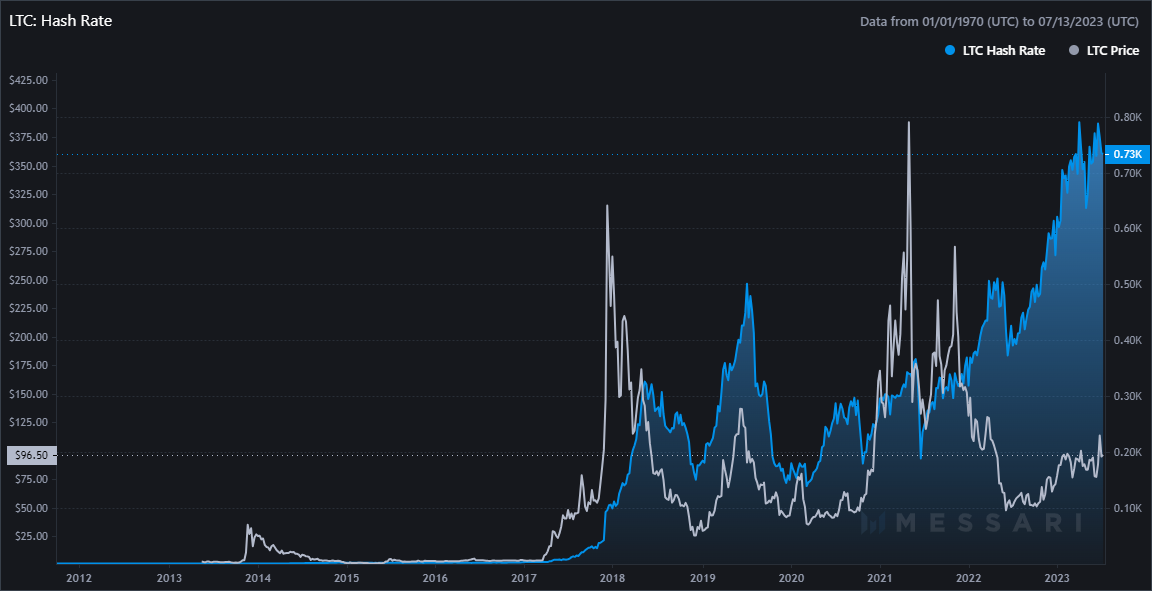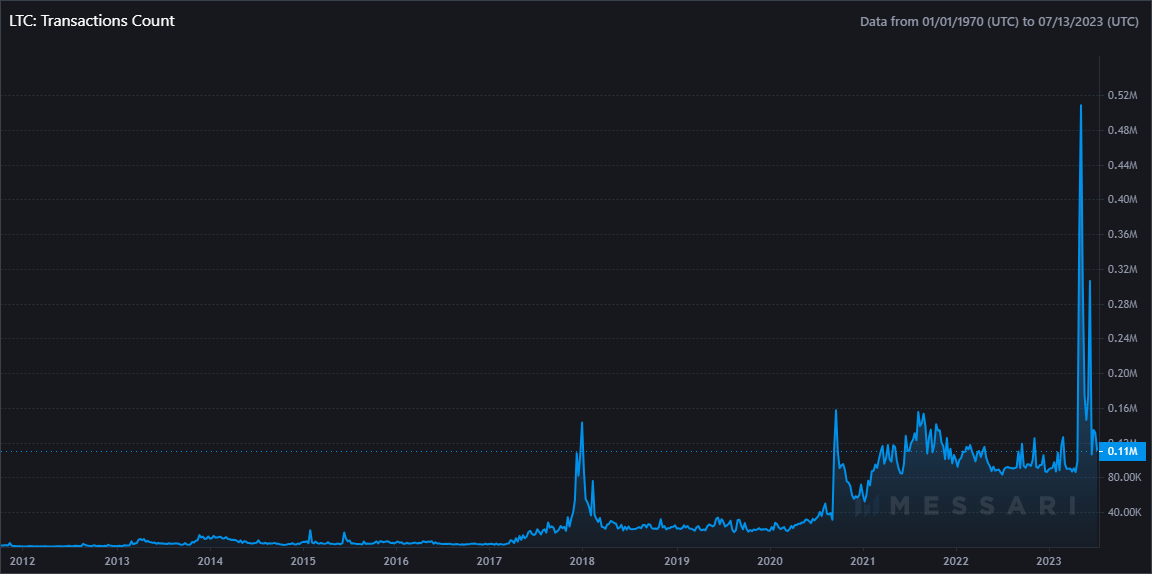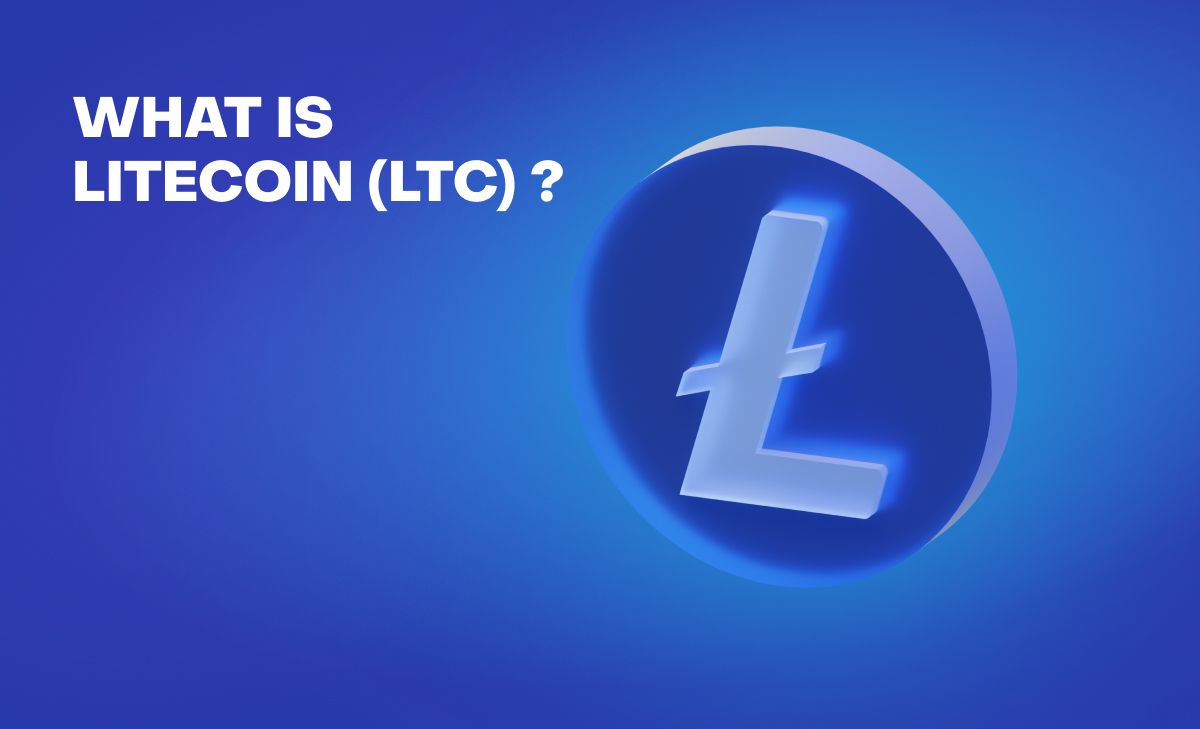Litecoin is often referred to as the "silver" to Bitcoin's "gold" due to its similarities with Bitcoin.
It is based on the same underlying technology, known as blockchain, and shares many fundamental features with its predecessor. However, Litecoin has several distinct characteristics that set it apart.
History of Litecoin
Created by Charlie Lee, a former Google engineer, Litecoin aims to address some of the limitations of Bitcoin by providing a faster and more efficient alternative.
The project launched on October 7, 2011, as the first “fork” of the Bitcoin blockchain. In the following years, other projects such as Bitcoin Cash (BCH) and Zcash (ZEC) would emerge as new forks of Bitcoin.
The project has since made a few technical improvements in recent years.
In 2022, the MWEB (Mimblewimble Extension Blocks) upgrade was activated on the Litecoin network as a soft fork. This upgrade provides users with the option of sending confidential Litecoin transactions, in which the amount being sent is only known between the sender and receiver.
In 2023, the LTC-20 token standard was added, giving projects the opportunity to launch their own tokens on the Litecoin blockchain (similar to the Ethereum blockchain’s ERC-20 token standard).
Development Team
Charlie Lee is the key individual behind the creation of Litecoin. As a former Google engineer and an early adopter of Bitcoin (BTC), Lee recognized the need for a digital currency that could offer faster transaction confirmations.
He assembled a development team consisting of volunteers and individuals passionate about cryptocurrency to work on improving and maintaining Litecoin's codebase.
How Does Litecoin Work?
Litecoin operates on a decentralized peer-to-peer network, similar to Bitcoin. It utilizes blockchain technology to facilitate secure and transparent transactions. The key difference lies in the underlying mechanics.
Similarities and Differences to Bitcoin
Like Bitcoin, Litecoin relies on cryptographic techniques to secure transactions and maintain the integrity of the blockchain. However, Bitcoin and Litecoin differ in terms of their block generation time, hashing algorithm, and maximum supply.
Faster Block Generation Time
Litecoin has a significantly faster block generation time compared to Bitcoin. While Bitcoin produces a new block every 10 minutes, Litecoin generates blocks every 2.5 minutes. This results in faster transaction confirmations and enhances the overall speed of the network.
Different Hashing Algorithm (Scrypt)
Bitcoin and Litecoin use different hashing algorithms. Bitcoin employs SHA-256 (Secure Hash Algorithm 256-bit), while Litecoin utilizes Scrypt. The Scrypt algorithm is memory-intensive and requires less computational power, making it more accessible for individual miners.
Larger Maximum Supply
Litecoin has a larger maximum supply compared to Bitcoin. While Bitcoin's total supply is capped at 21 million coins, Litecoin's maximum supply is set at 84 million coins. The increased supply of Litecoin helps to ensure more widespread distribution.
Both cryptocurrencies experience a “halving” — mining reward reduction — roughly every four years.
Litecoin miners are currently rewarded with 6.25 new LTC per block. The most recent LTC halving took place on August 2, 2023. Meanwhile, Bitcoin miners are currently rewarded with 6.25 new BTC per block. The most recent BTC halving took place on May 11, 2020, and the next BTC halving is expected to happen on or around April 26, 2024.

What is Special About Litecoin?
Litecoin offers several unique advantages that make it an attractive cryptocurrency.
Silver to Bitcoin's Gold
Litecoin is often considered the "silver" to Bitcoin's "gold." While Bitcoin is seen as a store of value and a digital equivalent to gold, Litecoin is designed for everyday transactions. Its faster block generation time and lower transaction fees make it more suitable for smaller transactions and day-to-day purchases.
Everyday Transactions
Due to its faster block confirmation times, Litecoin is well-suited for quicker payments, making it a viable option for retail and online purchases. Additionally, its lower transaction fees contribute to its appeal as a practical means of exchange.
Segregated Witness (SegWit) Implementation
Litecoin was among the first cryptocurrencies to implement Segregated Witness (SegWit) — a protocol upgrade that improves the efficiency and scalability of the blockchain. It allows for more transactions to be processed within a single block, reducing congestion and lowering fees.
Active Development Community
Litecoin benefits from a dedicated and active development community. The community consistently works on enhancing the protocol, implementing improvements, and exploring new features. This commitment to development ensures that Litecoin remains relevant and up-to-date with the evolving needs of the cryptocurrency ecosystem.
High Liquidity and Market Capitalization
LTC boasts high liquidity and a significant market capitalization. As of July 2023, LTC currently ranks just outside the top 10 cryptocurrencies by market cap with a total market cap of $6.6+ billion. LTC is widely available on numerous exchanges, making it easy for users to trade.

How to Buy Litecoin?
To acquire Litecoin, individuals can follow a straightforward process.
- Choose a Cryptocurrency Exchange: Select a reputable cryptocurrency exchange that supports Litecoin. Popular centralized exchanges such as Coinbase, Binance, and Kraken as well as decentralized exchanges such as Komodo Wallet offer Litecoin trading pairs.
- Sign Up and Verify: Create an account on the chosen exchange and complete the verification process if necessary.
- Deposit Funds: Deposit fiat currency (such as USD or EUR) or other cryptocurrencies into the exchange to use for purchasing Litecoin.
- Place an Order: Navigate to the LTC trading pair and place a buy order, specifying the desired amount of Litecoin to purchase.
- Securely Store Litecoin: Once the purchase is complete, transfer the acquired Litecoin to a secure cryptocurrency wallet. Some decentralized exchanges such as Komodo Wallet provide built-in storage options. Hardware wallets, such as Ledger or Trezor, provide enhanced security for long-term storage.
The Future of Litecoin
Litecoin continues to evolve and adapt to the changing landscape of cryptocurrencies.
Upcoming Upgrades and Improvements
Litecoin's development team is actively working on implementing new features and improvements. Future upgrades may include enhancements to privacy, scalability, and interoperability. These developments aim to further strengthen Litecoin's position as a reliable and innovative digital currency.
Role in the Cryptocurrency Ecosystem
Litecoin plays an essential role in the broader cryptocurrency ecosystem. As one of the oldest and most established cryptocurrencies, it serves as a benchmark for other projects and provides a diverse range of use cases. Its ability to complement Bitcoin as a medium of exchange highlights its significance in the digital currency space.
Conclusion
Litecoin has established itself as a prominent cryptocurrency with a rich history and unique features.
Its faster block generation time, Scrypt hashing algorithm, and larger maximum supply distinguish it from Bitcoin. Litecoin's practicality for everyday transactions, active development community, and increasing adoption (accepted as payment by over 2,000 merchants) make it a valuable asset in the evolving cryptocurrency landscape.
As it continues to evolve, Litecoin is poised to play an integral role in shaping the future of digital finance.
LTC Available on Komodo Wallet
Komodo Wallet is a non-custodial wallet, crypto bridge, and peer-to-peer (P2P) decentralized exchange that provides native support for the Litecoin blockchain. Users can HODL and trade LTC along with other popular cryptocurrencies such as BTC, ETH, DOGE, MATIC, and much more.

